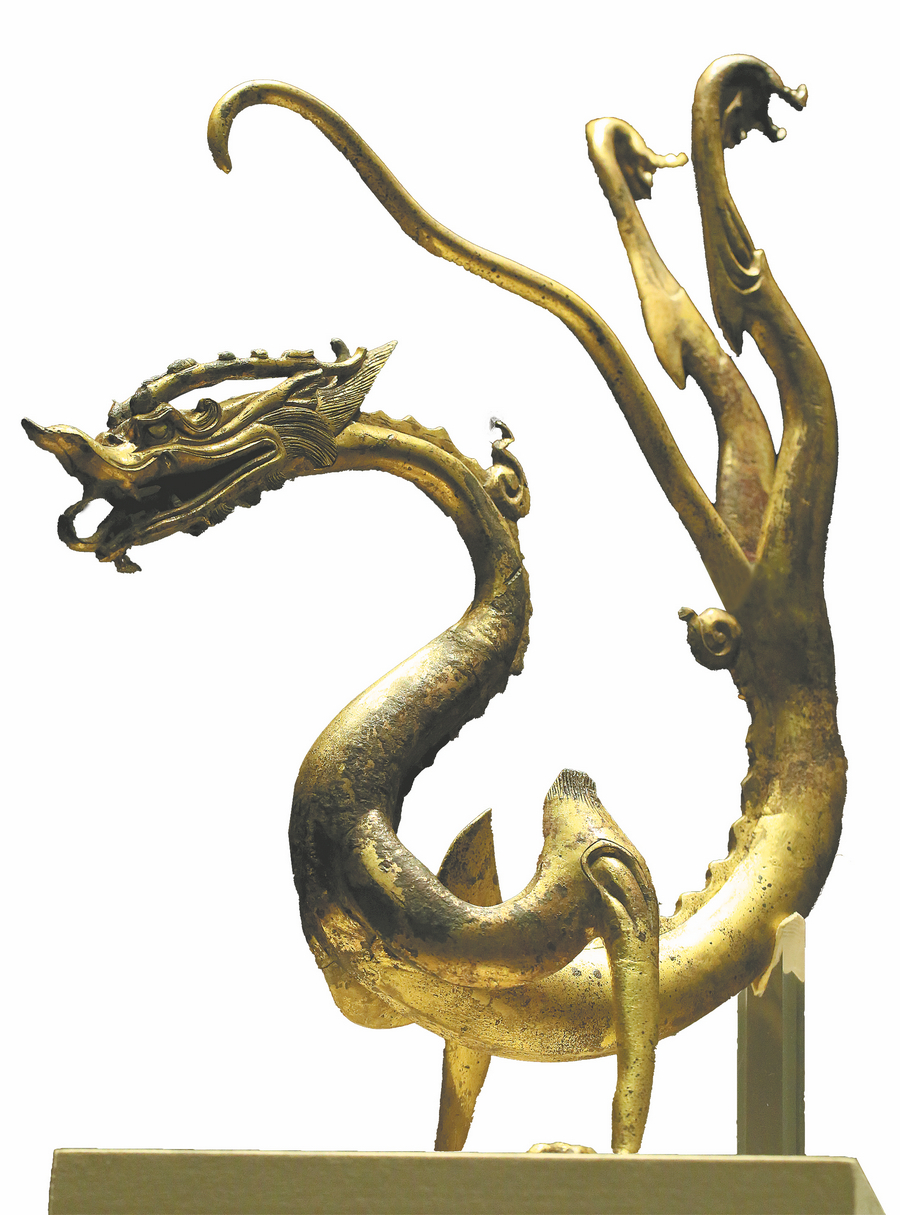

Other experts have gone a few steps further. Some, after having studied the oracle bone script carved by ancient Chinese somewhere between the 17th and 11th centuries BC, posit that the image of a dragon may have been born out of that of a seahorse. Others point to the colossal column of a tornado reaching down from a turbulent sky, saying that is what I Ching (Book of Changes), an ancient Chinese divination text, meant in its description of a dragon that "battled in the wilderness, its blood the color of a reddish dark (heaven) and yellow (earth)".
Others propose, if tentatively, that a dragon took its jagged form from lightning, and its sound — the Chinese word for dragon is pronounced loong — from the thunderous roar that follows.
All those natural phenomena are linked, directly or indirectly, to one element: water.
On one hand, depictions abound in ancient Chinese literature of tempestuous dragons that would announce their arrival by a loud rumble, before dumping their fury in a torrential downpour that would render the world blurry. On the other hand, a large part of the dragon worship that was to evolve later was centered on its power over the weather, either showering rain on cracked earth or making it stop once the land was flooded. Across the country, numerous dragon king temples were built, all by those praying for a good harvest, many still in existence today.